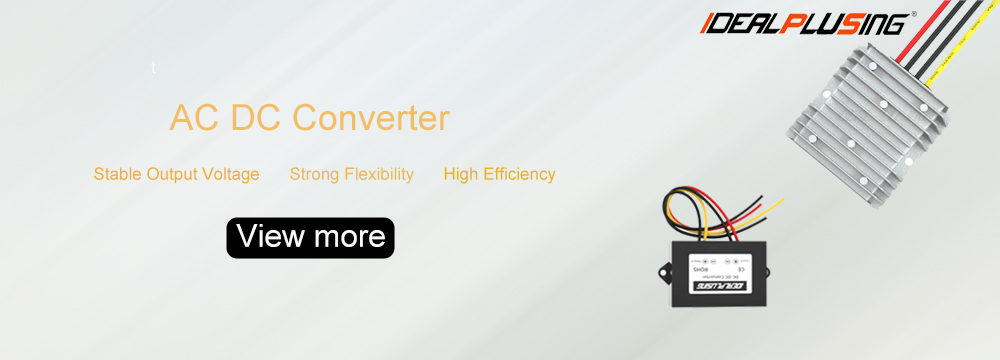What are alternating current and direct current, and what is the difference?
Alternating current (AC) refers to the alternating current in which the direction of the current changes periodically over time, and the running average value in one cycle is zero. Usually the waveform is a sine waveform, and alternating current can effectively transmit power. But in fact, there are other waveforms, such as triangular waves and square waves. The mains electricity used in life is alternating current with a sine waveform. Take the 220V electricity used at home as an example. The potential of the neutral line is 0V. The live wire generates corresponding potentials of addition and subtraction on the neutral line due to different time. When adding, the current is in one direction, and when subtracting, the current is in another direction. This forms a current that changes direction alternately, so it is called alternating current. The direction of direct current (DC) changes over time, but direct current does not change periodically.
How to convert alternating current (AC) into direct current (DC)?
Use a rectifier, linear power supply, switching power supply or ACDC power supply module, etc. The rectifier is a rectifier device, which is simply a device that converts alternating current (AC) into direct current (DC). The rectifier circuit is basically composed of a transformer, a rectifier main circuit, a filter capacitor circuit, a voltage stabilization circuit, etc. The transformer is used to reduce the AC voltage to a usable AC voltage. The main rectifier circuit usually uses a bridge rectifier circuit to convert AC into DC. Capacitors and inductors are commonly used for filtering to reduce the amplitude of the periodic current change. Voltage stabilization usually uses a three-terminal voltage regulator to stabilize the voltage at a fixed value and become a standard DC. The bridge rectifier circuit consists of four diodes connected in a certain order of head and tail. This circuit is used the most because it has the highest efficiency.
Four processes of converting AC to DC:
The four processes of the AC-DC power module to convert 220V AC into low-voltage DC are step-down-rectification-filtering-voltage stabilization. The process of converting AC into DC is called rectification of AC. The rectifier circuit converts industrial frequency AC into pulsating DC. The filter circuit filters out the AC component in the pulsating DC, reduces the AC component, and increases the DC component. The voltage stabilization circuit uses negative feedback technology to further stabilize the rectified DC voltage.
Rectification can be divided into several forms such as half-wave rectification, full-wave rectification, and bridge rectification. Common rectifiers use the unidirectional conductivity of electron tubes and crystal diodes for rectification. For example, rectifiers made of semiconductor materials such as germanium and silicon have been widely used in many aspects. In order to adapt to higher voltage rectification, many single rectifiers can be connected in series and sealed in a piece of insulating material, which is called a silicon stack. The rectifier can remove the waveform of the negative half cycle of the AC and turn the AC into pulsating DC. Therefore, the output waveform after rectification only contains the positive half cycle waveform of the sine wave.
An ideal rectifier can be regarded as a switch. When the AC input is in the positive half cycle, there is a voltage output, just like the switch is turned on. On the contrary, if the AC input is in the negative half cycle, there is no voltage output, which is equivalent to the switch being turned off. Therefore, when the AC input is in the positive half cycle, the effective resistance of this switch is zero. When the AC input is in the negative half cycle, the effective resistance is infinite. In fact, the rectifier cannot be so ideal, but it is not far off. When the electron tube rectifier is not conducting, its resistance is extremely large, and the resistance at this time is called reverse resistance. When the rectifier is conducting, its resistance is very small, and the resistance at this time is forward (forward) resistance. Regardless of any circumstances, all rectifiers only allow conduction in one direction, and this characteristic is called unidirectional conduction or unidirectional characteristic.
Half-wave rectifier circuit:
Half-wave rectification is to use the unidirectional conductivity of the diode so that the voltage Vo output from the transformer can only reach the load in half a cycle. The schematic diagram is shown below:
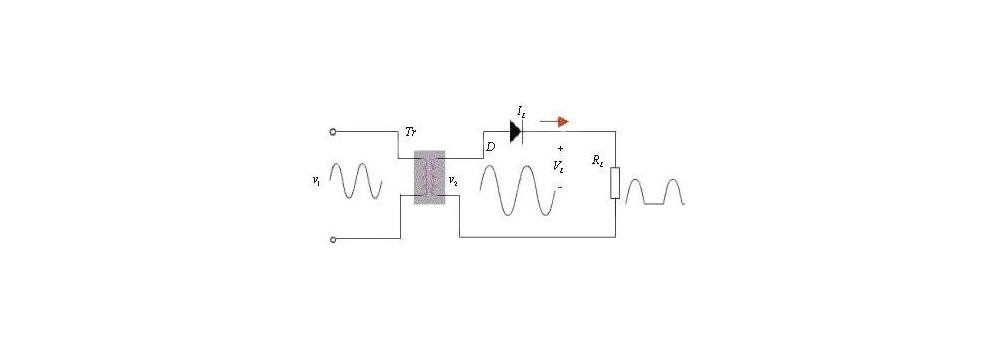
Full-wave rectifier circuit:
The full-wave rectifier circuit is composed of a transformer with a center tap on the secondary side and two diodes. The schematic diagram is shown below: current flows through the load in both the positive and negative half cycles, which improves the rectification efficiency.
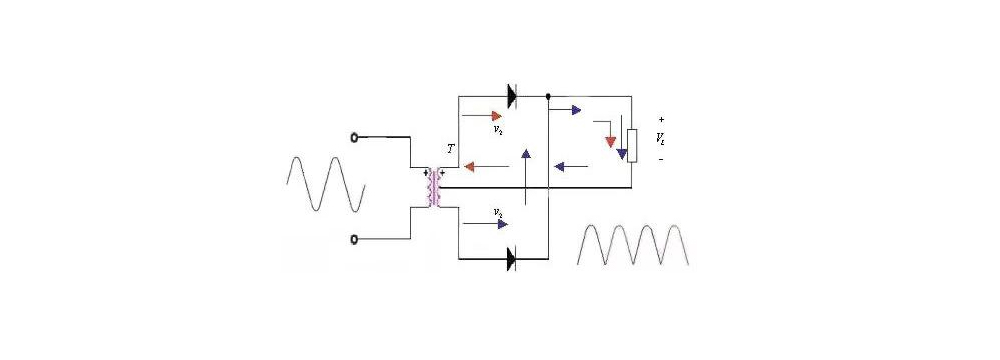
Bridge rectifier circuit:
Single-phase bridge rectifier circuit is the most basic circuit that converts AC to DC. When analyzing the working principle of the rectifier circuit, the diodes in the rectifier circuit have unidirectional conductivity. During the positive half cycle, diodes D1 and D3 are turned on, and the positive half cycle of the sine wave is obtained on the load resistor. During the negative half cycle, diodes D2 and D4 are turned on, and the negative half cycle of the sine wave is obtained on the load resistor. After the positive and negative half cycles are synthesized on the load resistor, a unidirectional pulsating voltage in the same direction is obtained. The schematic diagram is shown below:
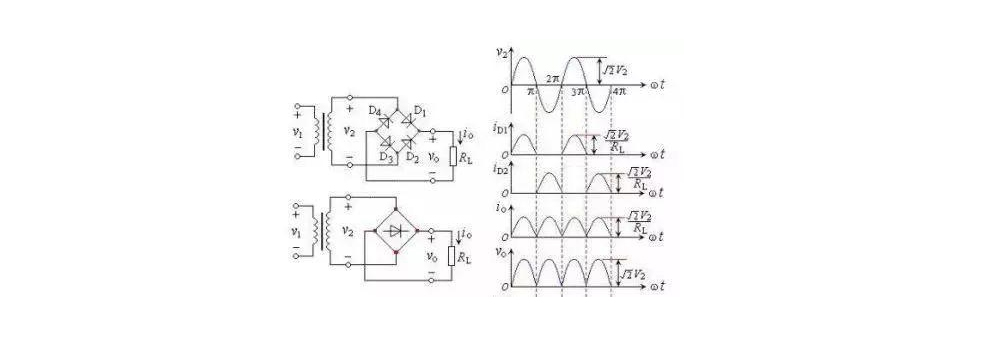
For example, the following simple method of converting AC 24V to DC 24V is to use bridge rectification, filtering, and voltage regulation to obtain 24V DC power. The principle is shown in the figure below:
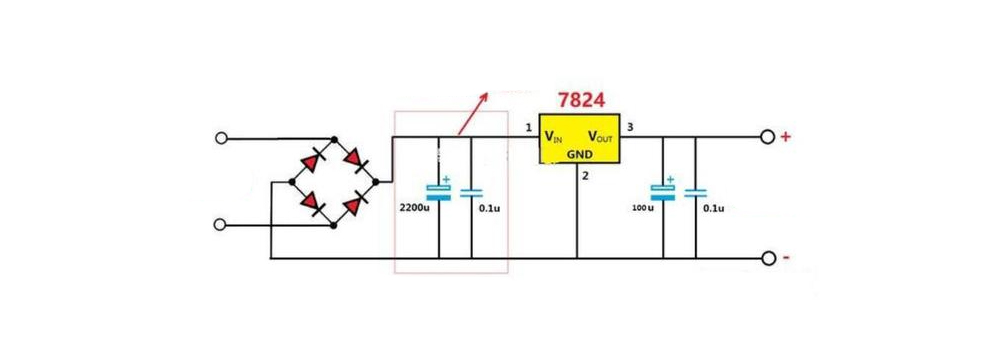
There are many ways to convert AC to DC. For example, if you want to convert AC to fixed DC, you can choose acdc power modules, linear power supplies, switching power supplies, adapters, etc. If you just want to convert AC to DC, you can buy some rectifiers.
Share our interesting knowledge and stories on social media









